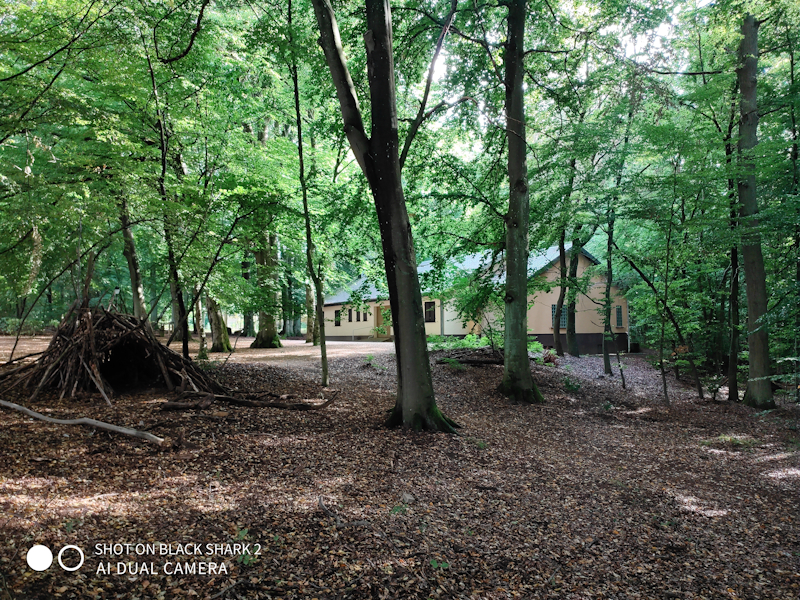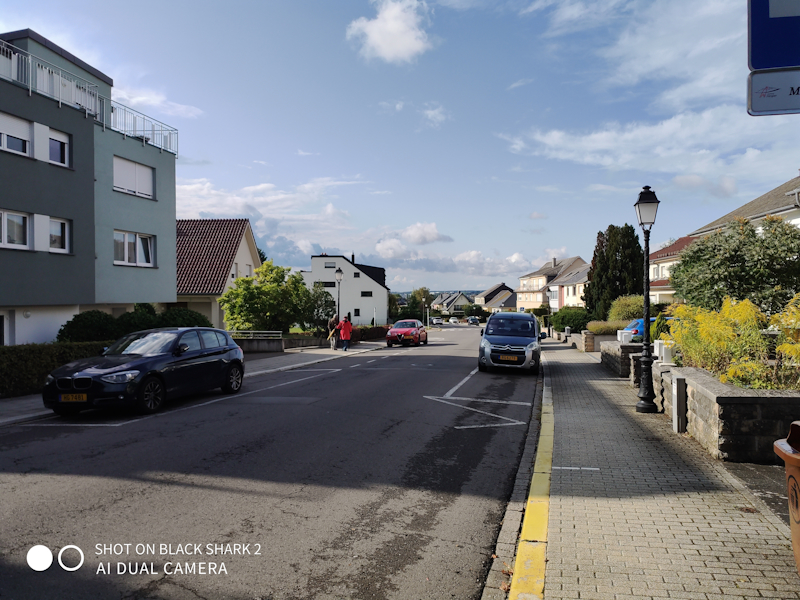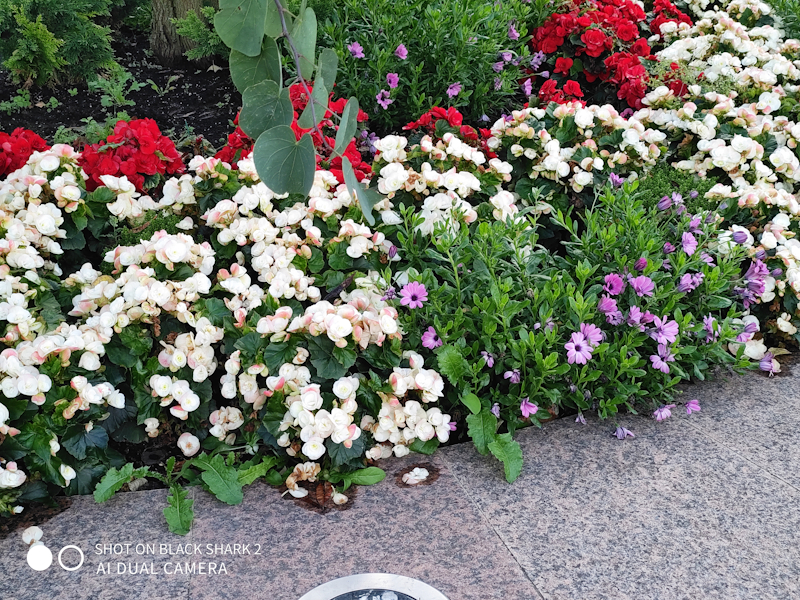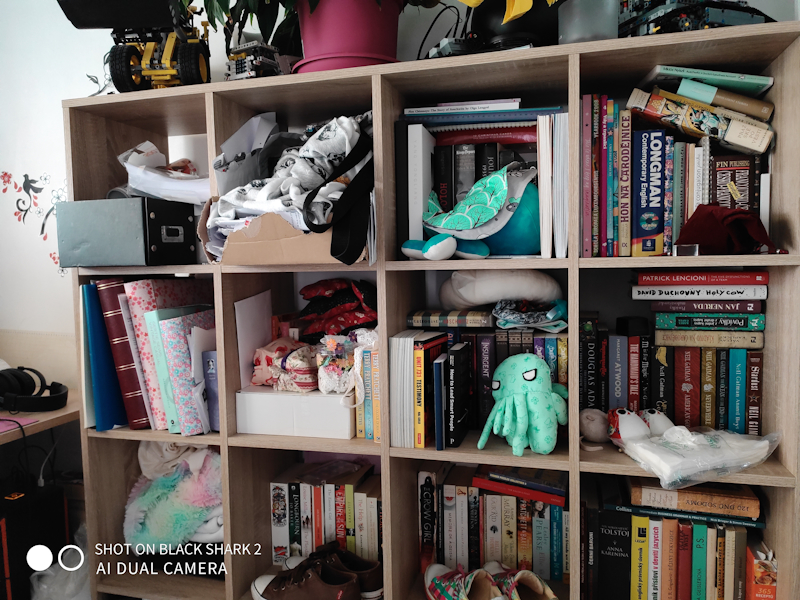The Black Shark 2 Review: A Gaming Phone's Existential Crisis
by Andrei Frumusanu on September 25, 2019 8:00 AM EST- Posted in
- Mobile
- Smartphones
- Xiaomi
- Snapdragon 855
- Black Shark 2
Camera - Daylight Evaluation
The camera performance of the Black Shark 2 is something that in theory should be extremely similar to the Xiaomi Mi9 – both phones are after all from the same vendor and employ the same camera sensor and similar optics. The one area where the BS2 differs in is that its secondary camera is just a regular 2x telephoto lens in a year where most vendors have opted to prioritise wide-angle modules.
I have to apologise for the vendor label on the photos of the BS2 – I hadn’t realised it was enabled until after I had captured the camera shots.

[ BlackShark 2 ] - [ S10+ (E) ] - [ S10+ (S) ]
[ Xperia 1 ] - [ P30 Pro ] - [ Mi9 ] - [ G8 ]
[ Reno 10x ] - [ RedMagic 3 ] - [ Pixel 3 ] - [ iPhone XS ]
In the first shot, the results actually start out quite disappointing as there’s a massive difference to the result of the Mi9. The BS2’s shot has completely wrong colour temperature and the whole scene is far too grey – a common issue with this scene that I’ve encountered with a lost of phones in past reviews.
While exposure and highlight retention seems similar, the BS2 seems to darken the shadows more than the Mi9.
The zoom lens photo in this shot is weird as it doesn’t look like it used the telephoto sensor at all, and it just looks like a crop of the main sensor with all of its disadvantages.

[ BlackShark 2 ] - [ S10+ (E) ] - [ S10+ (S) ]
[ Xperia 1 ] - [ P30 Pro ] - [ Mi9 ] - [ G8 ]
[ Reno 10x ] [ RedMagic 3 ] - [ Pixel 3 ] - [ iPhone XS ]
This next shot again shows very dark shadows. Looking at the EXIF, the BS2’s exposure was one fourth as long as the Mi9’s, resulting that the top 15% of levels in the image are just nonexistant.
On the zoom shot, the BS2 this time around did use its dedicated sensor. Colour temperature this time around was better than the Mi9, and exposure is also ok. When looking at details though we’re seeing very different results as the BS2 is visibly employing a contrast and sharpening filter while the Mi9 remains natural.

[ BlackShark 2 ] - [ S10+ (E) ] - [ S10+ (S) ]
[ Xperia 1 ] - [ P30 Pro ] - [ Mi9 ] - [G8 ]
[ Reno 10x ] - [ BlackShark 2 ] - [ RedMagic 3 ]
[ Pixel 3 ]
On the main camera here in the flowers the BS2 does actually a lot better than the Mi9 due to more accurate colour temperature and a lot more preserved detail. Even though both cameras showcase the same image brightness in terms of levels, the BS2’s exposure here is at 1/500th second while the Mi9 was at 1/192th second. The lack of OIS on both phones would favour the faster exposure due to less shaking, and I think that’s possibly why the BS2 looks to have retained a lot more detail.
On the zoom module we again see that the BS2 employs a heavy contrast and sharpening filter, which does bring out the edges in objects, however it also blurs out finer low-contrast detail.

[ BlackShark 2 ] - [ S10+ (E) ] - [ S10+ (S) ]
[ Xperia 1 ] - [ P30 Pro ] - [ Mi9 ] - [G8 ]
[ Reno 10x ] - [ RedMagic 3 ] - [ Pixel 3 ] [ iPhone XS ]
The BS2 didn’t fare well here in this shot as it’s far too underexposed in favour of the sky. Details in the scene is also quite decimated as it’s blurry and it looks washed out, there’s a huge difference to the Mi9 here.
The zoom shot is also a bit underexposed, but the bigger issue is again the sharpness filter that manages to blur together all the detail in the foreground grass.

[ BlackShark 2 ] - [ S10+ (E) ] - [ S10+ (S) ] - [ Xperia 1 ] - [ P30 Pro ]
[ Mi9 ] - [ G8 ] - [ Reno 10x ] - [ RedMagic 3 ] - [ Pixel 3 ] - [ iPhone XS ]
In this last indoor shot the BS2 gets a lot more detail than the Mi9 due to the much lower ISO used. The problem is that the shot looks quite unnatural and with far too much contrast with the shadows being extremely pronounced.
Daylight Camera Conclusion
On paper, the Black Shark 2 should have been a good performer in daylight and essentially it just had to match what the Mi9 had to offer in terms of processing. Unfortunately, that’s not the case and the two phones have relatively little in common other than they share very similar camera hardware. The BS2 wasn’t able to showcase the same positive characteristics as its sibling device, and is simply just worse in almost every scenario. The telephoto lens was also very different in terms of results, and showcased a very detrimental contrast and sharpening filter that blurred out finer details of the scene in favour of lower-resolution high contrast detail. It’s good for thumbnails or medium resolution shots, but not good if you want the actual full resolution of the camera.










63 Comments
View All Comments
Jon Tseng - Wednesday, September 25, 2019 - link
Thanks interesting. I guess that definitely answers the question as to whether the paid Qualcomm partnership had any impact on your ratings (not that it would, knowing AT, I know!).PaulHoule - Wednesday, September 25, 2019 - link
What I found strange about the article is that, unlike most reviews of gaming hardware, there were not any benchmarks for games.Maybe that's because nobody cares how many frames per second you can render Candy Crush which is why they pack it in with Windows so Intel can claim there is a "game" you can play with the integrated graphics.
If there aren't any games that need a gaming phone, why does a gaming phone have to exist? It's like the sound of one hand clapping. isn't it?
Death666Angel - Wednesday, September 25, 2019 - link
I mean, there area pretty intensive games for smartphones out there, think PUBG, Fortnite, racing games. I don't really know if they provide accurate/useful ingame benchmarks and I don't know if there are any FRAPS / FCAT like apps for Android. I don't think we get anything better than 3DMark and GFXBench right now. :) Everything else is non repeatable and therefore of little use.PeachNCream - Wednesday, September 25, 2019 - link
Pretty sure the decision to include Candy Crush is between Microsoft and King. It isn't a decision related to Intel. After all AMD based Windows systems ship with it preloaded as well.crimson117 - Wednesday, September 25, 2019 - link
I think benchmarks were omitted because "the firmware detects benchmarks and disables thermal throttling in order to get better scores." So benchmarks would be meaningless and misleading.s.yu - Wednesday, September 25, 2019 - link
Generally Anandtech's benchmarks should be immune to detection, which is stated in the article.Andrei Frumusanu - Thursday, September 26, 2019 - link
Yes, we bypassed detection for the published scores.raghusa - Wednesday, September 25, 2019 - link
AT was always one of my go to place to get in-depth analysis and reviews. Now that AT is going with PAID partnership route, my view of AT analysis is definitely going to change, will likely look for other reputable sources ....Andrei Frumusanu - Thursday, September 26, 2019 - link
The review content is still fully independently written, and the editorial team including myself have no contact with the sponsor in this regard. In any case this series will come to a closure on Monday.Wardrive86 - Thursday, September 26, 2019 - link
I wish that it was not coming to an end! I very much enjoyed this series.